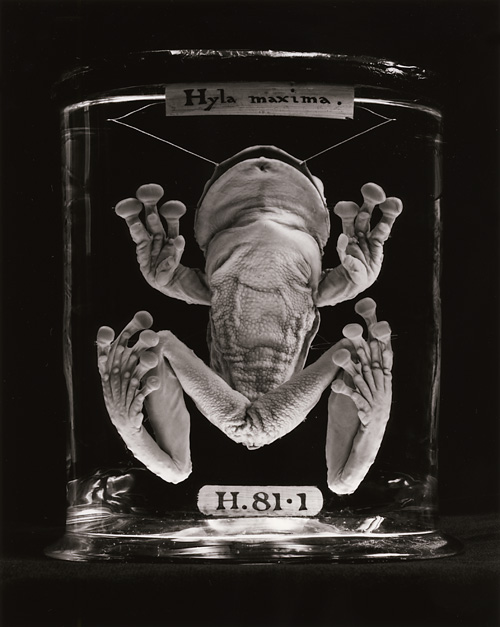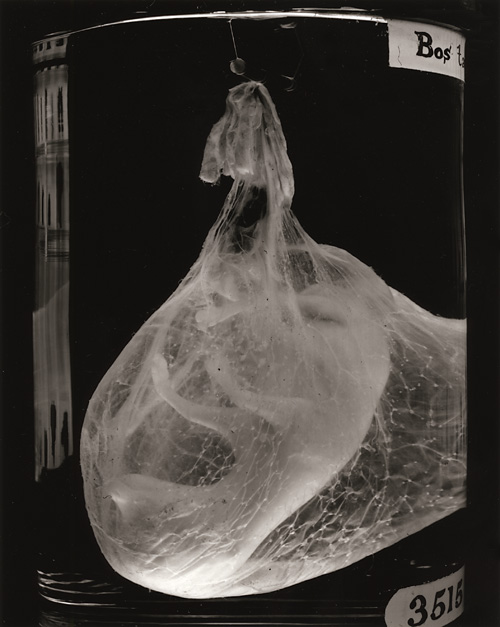





Some of you might remember my recent post on the mysterious formalin preserved animals. I just received affirmation from Simon Chaplin, Director of the Museum and Special Collections at the Royal College of Surgeons of England, that they are, indeed, photographs of specimens in his collection.
Chaplin tell us that these photographs are "the work of Elaine Duigenan, from her project 'Mysteries of Generation'. The specimens are from the Hunterian Museum at The Royal College of Surgeons in London - all are from the collection of John Hunter, and were made between 1760 and 1793. There are images of all 3,600 specimens online here - though not the same quality as Elaine's photographs!"
Above are some additional images by Duigenan from the same series. And here is what she had to say about this 'Mysteries of Generation' series, from her website:
MYSTERIES OF GENERATIONI have posted more of her images of the collection above; you can see more by on her website by clicking here. Also, you can view and learn about all 3,600 specimens in the Hunterian Collection (thanks, Simon! This was a resource I did not know about!) by clicking here.
Preserver (french) - to keep safe, to keep in existence
The images were taken over the course of three years at the Royal College of Surgeons, London. They are of 200 year old animal specimens which were preserved by pioneer anatomist John Hunter (1728 - 1793).
“For me, photography has become an ‘act of preservation’ and objects I focus on become the locators or igniters of memory. The traces and remnants we find in any landscape can spark recognition. They can even invoke a presence.”


5 comments:
Absolutely beautiful.
These are extraordinarily beautiful! Thanks for drawing my attention to them...
been there three years ago and it was really worth a visit!
so if you are in London: go there!
Small point of order! It's unlikely these specimens were preserved in formalin since its fixation effects weren't discovered until 1893 http://www.springerlink.com/content/r826hr5j15832767/ - 100 years after Hunter's death! Even formaldehyde wasn't discovered until 1868. So can anyone tell us what these samples were in fact preserved in?!
(Or rather, I should say, unlikely they were *originally* preserved in formalin - perhaps they were originally preserved in alcohol, which was later changed for formalin. Sorry for the pedantry).
Post a Comment